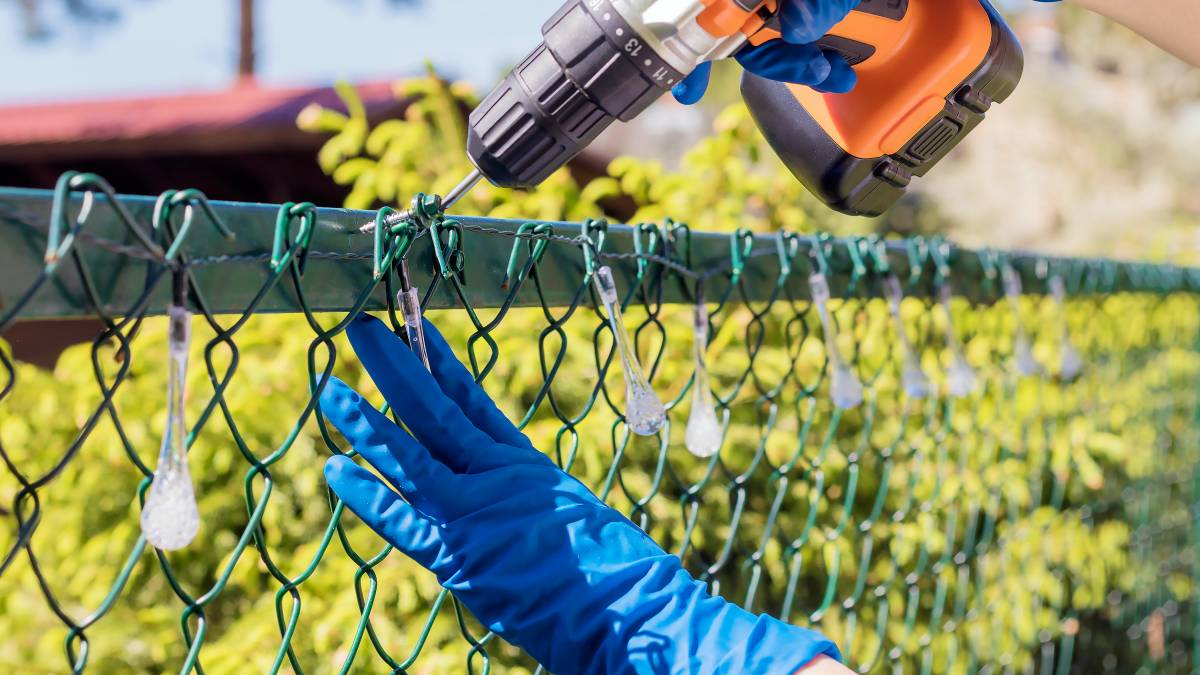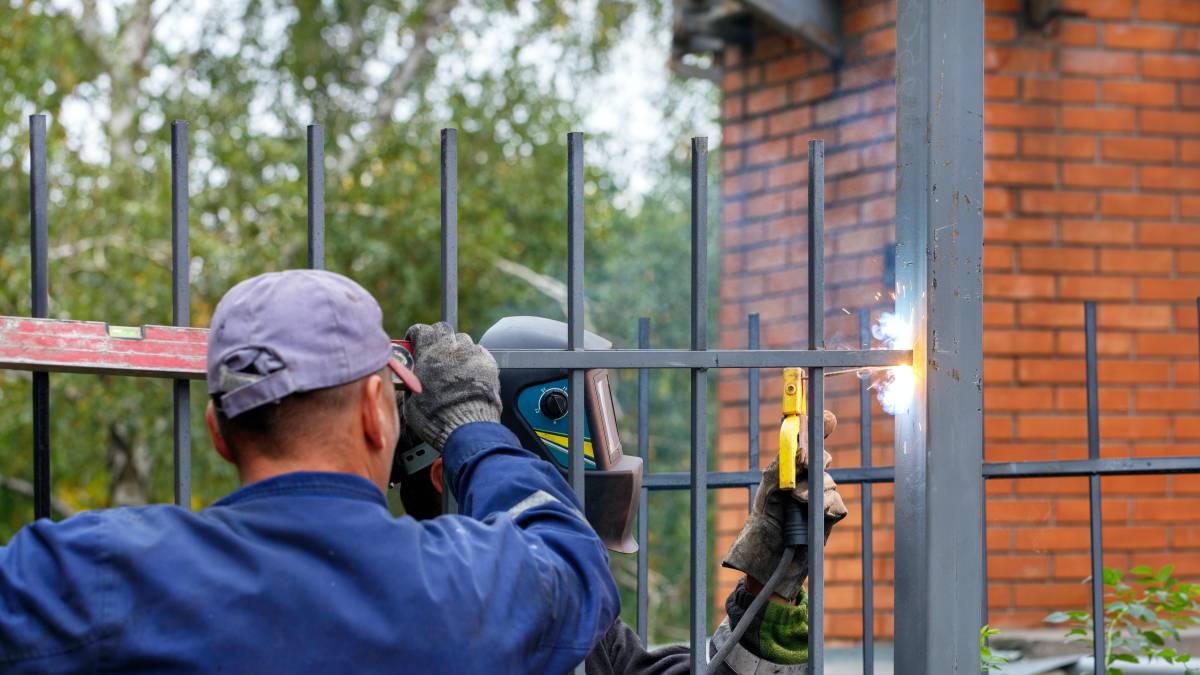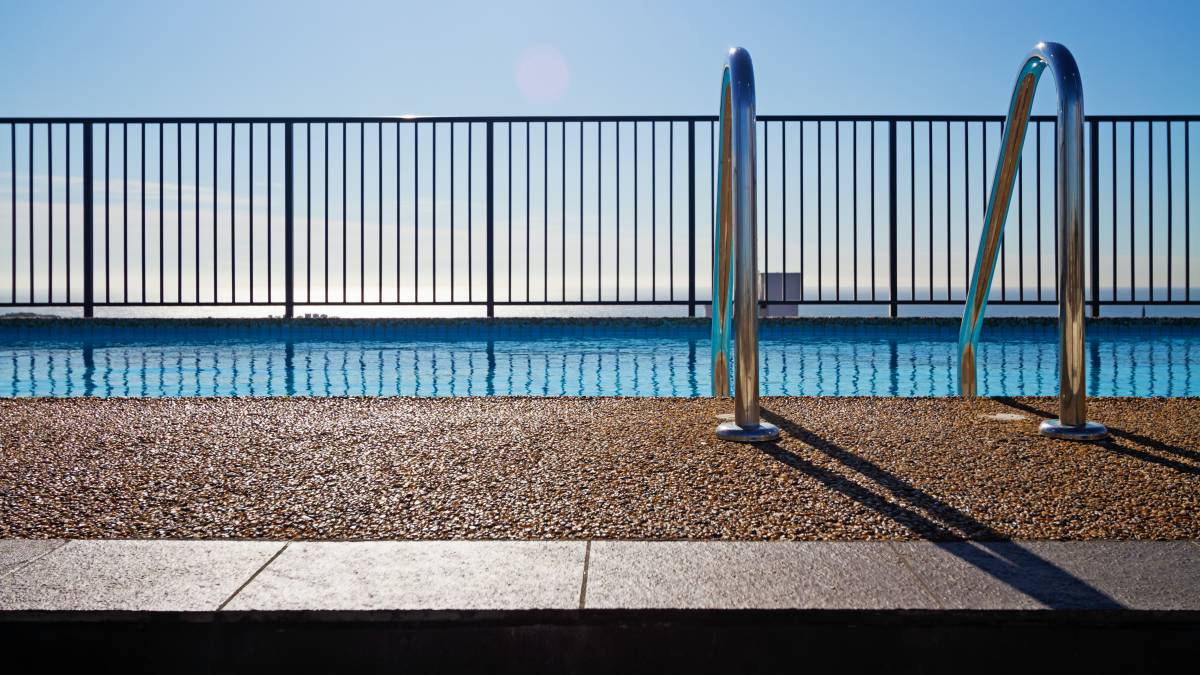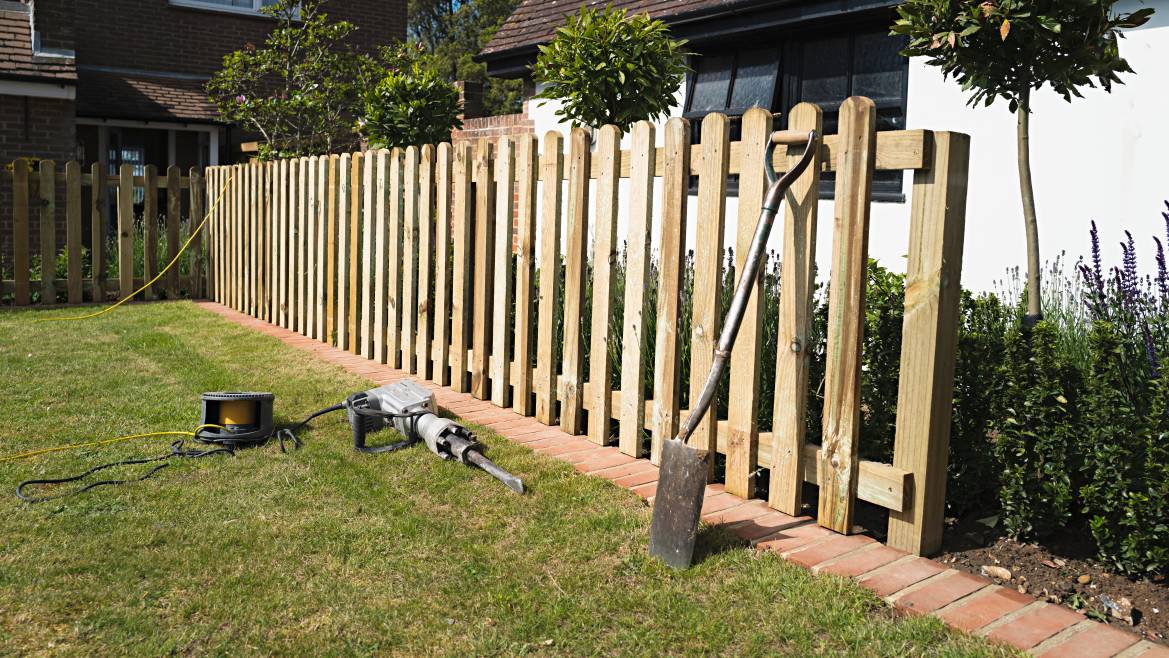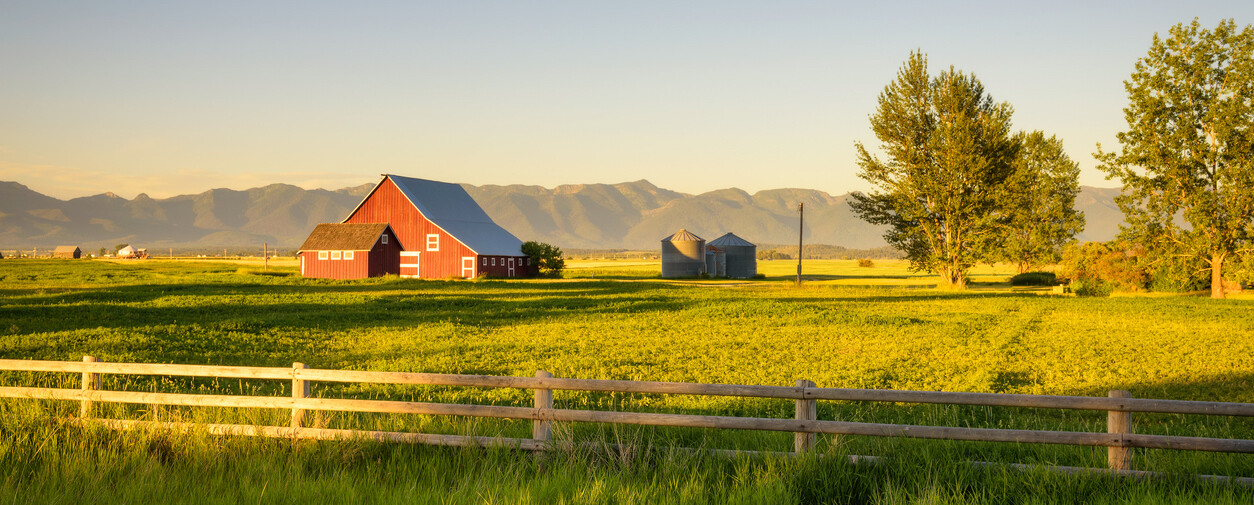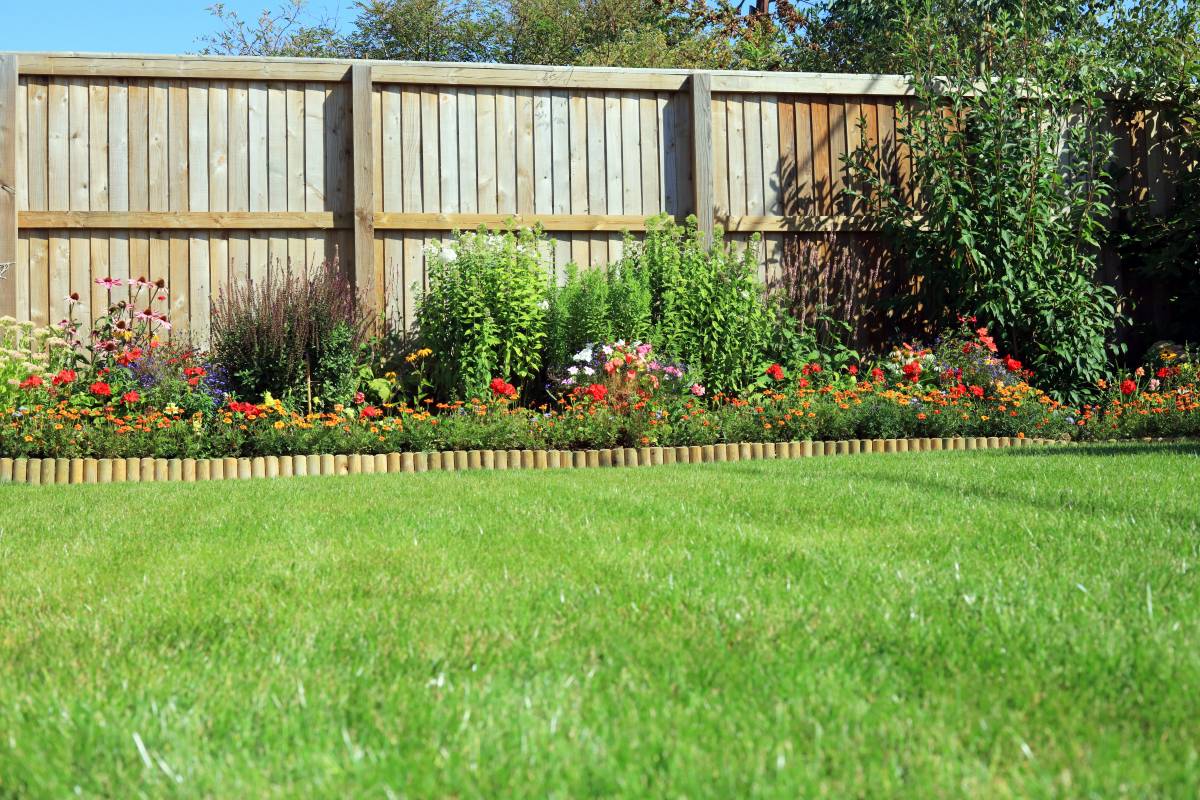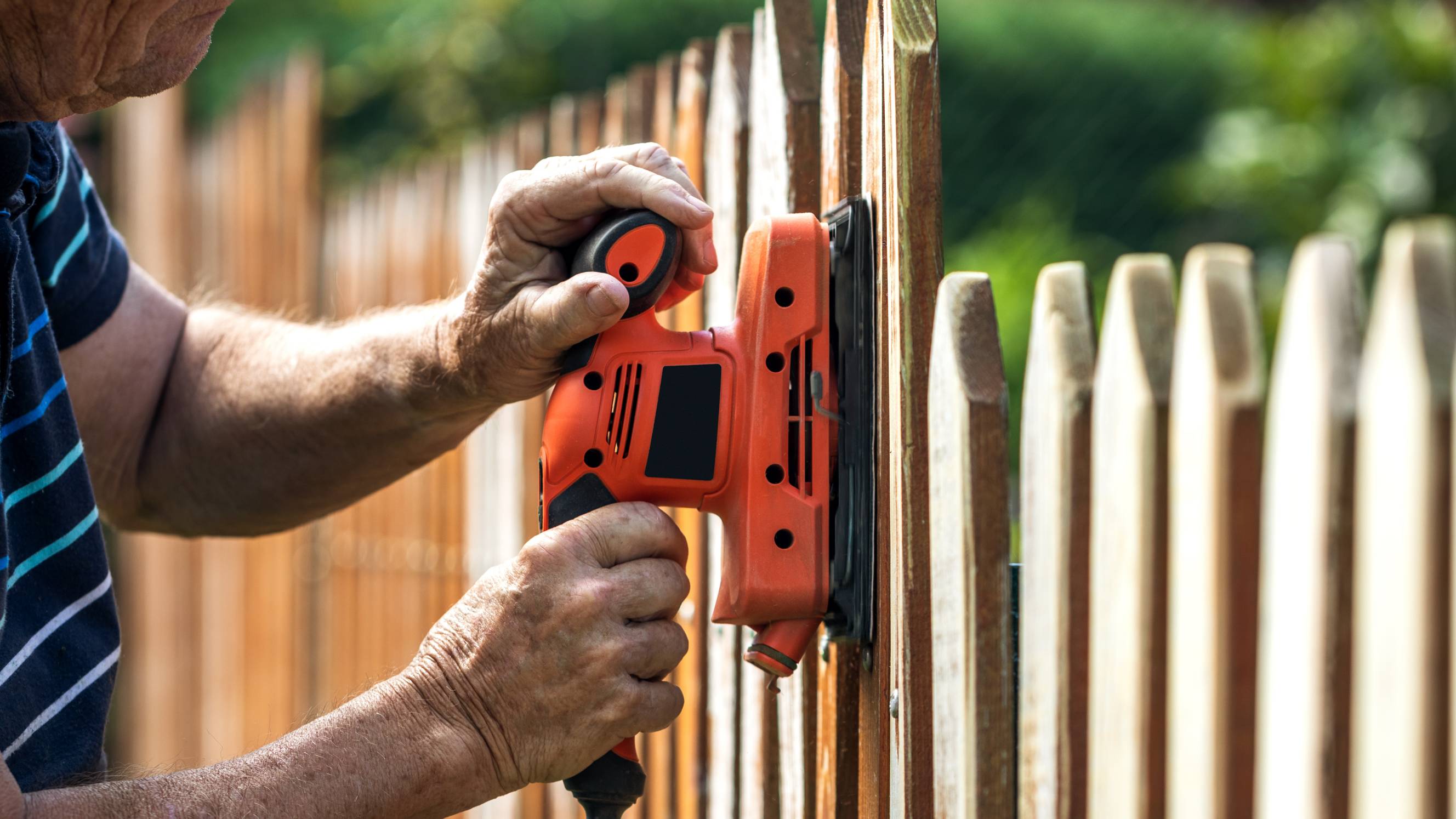
- Home/
- Costs/
- Fence Installation/
- Fencing Cost Guide
How much is the cost of fencing installation in Australia?
Post to find a price. It's free and only takes a minute.
Estimated fence installation price range per metre
$33 - $2,400
low
$33
median
$737
high
$2,400
Last Updated on

Written by Angela A.
Staff Writer
Read more about our contributor
Key Facts
The average cost of a fence per metre in Australia is $33 to $1,100.
Pressure-treated wood and composite fencing materials are incredibly durable, saving you money over time.
Planning approval may not be required for fences in certain zones if they meet specific regulations, but restrictions apply in heritage-listed areas, conservation zones, and koala habitats.
A fence doesn’t just add privacy and security. It also enhances your home’s kerb appeal. However, the cost of fencing can vary widely based on factors like materials, labour, and size. So, it can be hard to budget for this project.
The average fencing costs are $33 to $1,100 per metre. This guide will explore these numbers further and tackle what to expect and tips for staying on budget. Confidently plan your project and make the best choice for your home.
Overview of fence installation costs
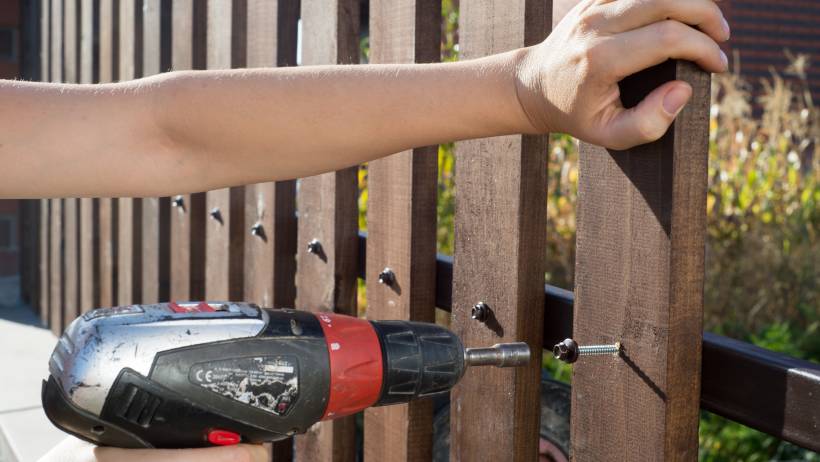 A fence installer using a power drill to install wooden fencing (Source: iStock)
A fence installer using a power drill to install wooden fencing (Source: iStock)
Fencing prices can vary depending on the materials, size, and complexity of the project. On average, you’ll need to consider the cost of fence panels, posts, and any additional materials, plus labour for installation and ground preparation.
Fencing is available in several types, including wooden, metal, and PVC. The number of panels depends on your property’s perimeter, and taller fences (around 6 feet) tend to cost more due to additional materials. Just don’t forget about posts and gravel boards for extra stability and protection against ground moisture.
When hiring professional installers, labour and ground preparation add to the total cost. This includes clearing vegetation, removing old fences, and preparing uneven terrain. Planning permission might be required in certain cases, especially if your fence is near a road or a listed building.
What are the average costs of fencing in Australia?
The type of fence you go for will dictate how much fencing is per metre. Some options are budget-friendly, while others are more costly, but the key is knowing which option suits your needs and budget. Keep reading to see what each option will set you back and find the best choice for your space.
Metal fencing
| Fence type | Average costs per metre (including labour) |
|---|---|
Colorbond fencing |
$70 to $130 |
Steel fencing |
$94 to $182 |
Wrought iron fencing |
$550 to $1,000 |
Aluminium fencing |
$392 to $1,200 |
Metal fences are a go-to option in Australia, and a new one can cost anywhere from $70 to $1,200 per metre.
The cost of a Colorbond fence sits between $70 and $130 per metre. It’s a favourite due to its toughness and weather resistance. Plus, it comes in a range of colours to match your home.
Steel fencing is durable and costs $94 to $182 per metre. However, while strong, it might need a bit more TLC and rust prevention in wetter climates.
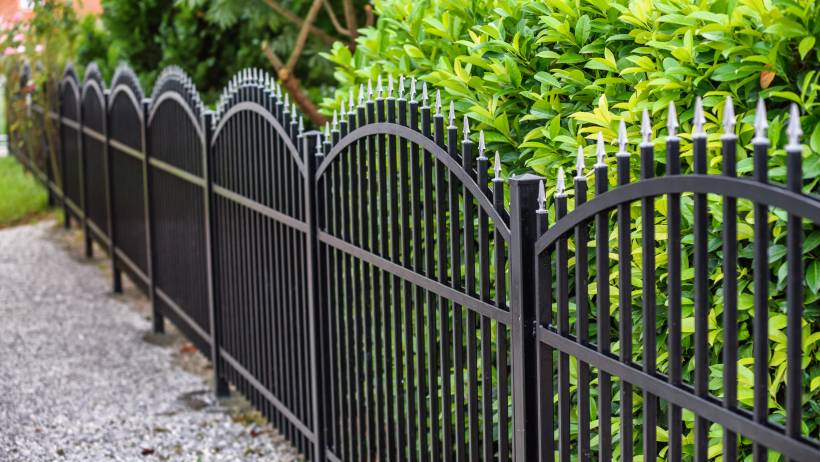 A decorative black metal fence surrounded by lush green foliage (Source: iStock)
A decorative black metal fence surrounded by lush green foliage (Source: iStock)
For those who want their fence to make a statement, wrought iron fencing can help with that, though the cost of an iron fence can go from $550 to $1,000 per metre. It also needs some upkeep, like regular painting, to stay in top shape.
If you’re after something that’s rust-resistant and easier to maintain, aluminium fencing could be your pick. Aluminium fence costs range from $392 to $1,200 per metre, but it’s lightweight, long-lasting, and less hassle overall.
Wood fencing
| Fence type | Average costs per metre (including labour) |
|---|---|
Timber fencing |
$130 to $350 |
$58 to $105 |
Wood fencing is popular for its natural charm and affordability, especially for garden fences and chicken coops. The cost to build one can range from $58 to $350 per metre.
Timber fence costs range from $130 to $350 per metre and are very flexible—you can stain, paint, or leave it natural. But be ready for some upkeep since timber requires regular maintenance to prevent rot and termite damage.
On one hand, picket fences are often used in front gardens for a rustic, traditional look. They’re lighter on the wallet, as picket fence costs range between $58 and $105 per metre. They won’t provide much privacy compared to taller fencing options but are still worth considering when budgeting for front fence costs.
Other fencing types
| Fence type | Average costs per metre (including labour) |
|---|---|
$220 to $1,100 |
|
Brick fencing |
$550 to 1,000 |
$33 to $90 |
|
$500 to $2,400 (per set) |
*Note: Pet fencing is sold per set and not by metres.
If you want style and safety without obstructing views, glass fencing is a sleek option. Commonly used around pools, glass pool fence costs range from $220 to $1,100 per metre, depending on whether you go for frameless or semi-frameless designs. Just make sure it meets safety standards with proper gate mechanisms.
Brick fencing offers ultimate privacy and security, with prices between $550 and $1,000 per metre. It’s durable and is often combined with timber or metal inserts for a modern twist.
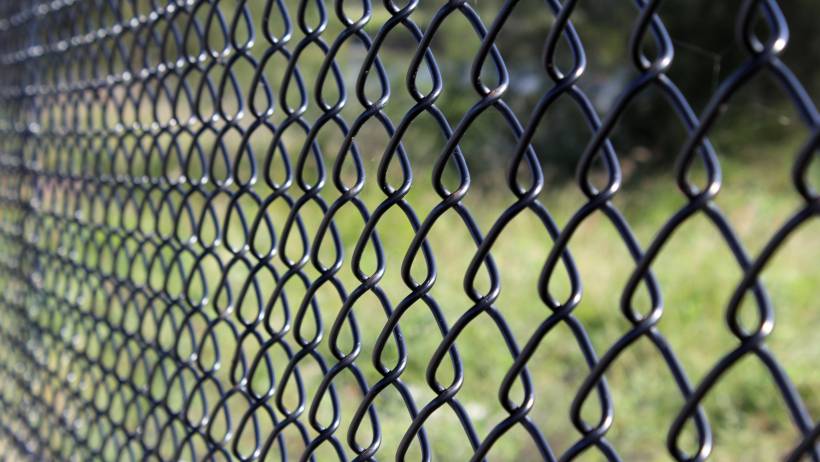 Close-up of ornate black chain-link fence (Source: iStock)
Close-up of ornate black chain-link fence (Source: iStock)
PVC fencing, on the other hand, is a low-maintenance and budget-friendly option. PVC panels are also resistant to weather and pests, which makes them a practical choice for many Australian properties.
For pet owners who want to keep their furry friends safe, install pet fences. Their costs range from $500 to $2,400.
What factors affect the costs of fence installation?
Many factors influence the final price of your fence installation, so it’s not just about choosing a material and starting. Read on to find out what to consider before using any fencing cost estimator in Australia to get an accurate estimate.
Geographic location
| Areas | Labour rates per hour |
|---|---|
$29 to $36 |
|
$39 to $45 |
|
$31 to $38 |
|
$29 to $36 |
|
$21 to $28 |
|
$29 to $36 |
|
$30 to $35 |
|
Darwin |
$31 to $38 |
Where you live in Australia can affect fencing costs per metre. Labour rates fluctuate depending on the city.
Places like Melbourne average $39 to $45 per hour, while Perth is a bit lower at $21 to $28. Urban areas tend to have higher labour costs, and rural regions might offer cheaper rates but could charge extra for transporting materials.
Local regulations also come into play. If you’re in bushfire-prone areas, you might need fire-resistant materials like Colorbond, which bumps up the price. Coastal areas favour aluminium or Colorbond due to their saltwater resistance, but these premium materials are more expensive.
Fence size and height
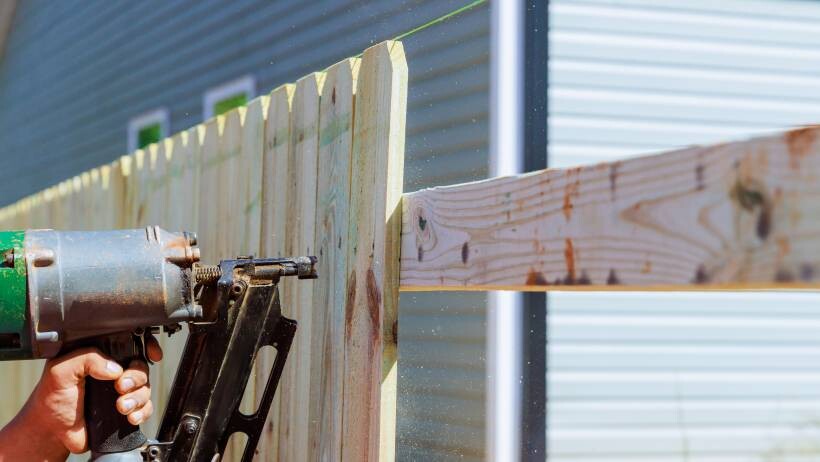 Using a power tool to install new fencing (Source: iStock)
Using a power tool to install new fencing (Source: iStock)
The size and height of your fence play a big role in determining the final cost. Taller fences, typically around 6 feet for privacy, require more durable materials and larger panels. This drives up both fencing costs per metre and labour expenses.
Shorter fences, like decorative picket styles, use fewer materials, so they’re more affordable and quicker to install. If you’re fencing a large perimeter, the total cost will rise as more panels, posts, and labour are needed to complete the job.
Material quality
The quality of materials directly impacts the fencing prices per metre. For example, higher-quality options like hardwood, composite, and metal cost more than standard low-cost fence panels or chain-link.
However, there’s a reason why these materials come with a steeper price tag upfront. Premium fencing panels made from oak, composite, or PVC are popular for their long lifespan and weather resistance in Australia’s unpredictable climate. Most of the high-end materials are also low-maintenance.
Basic timber is more affordable but requires regular upkeep. Other cheaper options like softwood, while cost-effective initially, may require more frequent maintenance and replacements that add to long-term costs.
Old fence removal
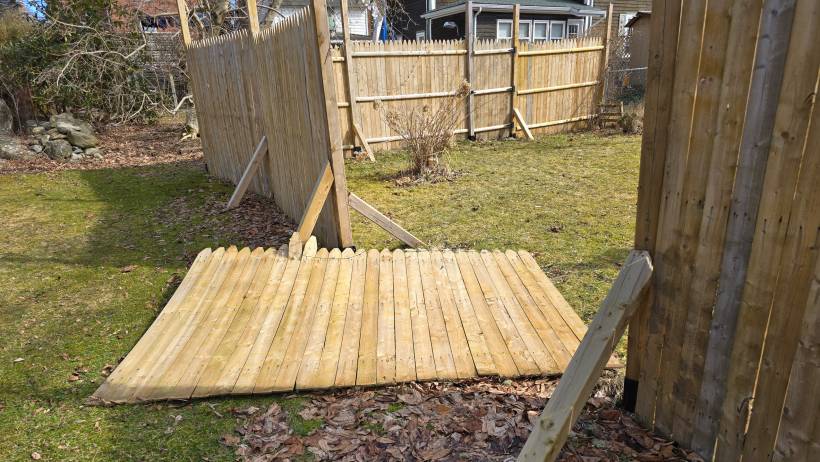 Old wooden boards being removed (Source: iStock)
Old wooden boards being removed (Source: iStock)
If you need to remove an old fence before putting up a new one, it will add extra labour time and expense. Removing concrete-set posts or deeply embedded structures can be tricky, so it will require more time, equipment, tools, and effort from the installers.
Ground preparation is often necessary as well, especially for older properties where fences have been rooted for years. This means you’ll need to level the area and repair any damage caused by the old fence. The rule of thumb is that the more complex the removal, the higher the labour charges.
Waste disposal
Waste disposal is another important factor that can raise the cost of your fence installation. After the old fence is removed, the debris—whether it’s wood, metal, or concrete—needs to be disposed of properly. Some contractors include this service in their quote, while others charge separately for waste removal.
Environmental regulations play a role, too. In Australia, there are specific regulations for disposing of treated timber, which may increase costs. It’s worth checking with your installer if these costs are included upfront or will come as an extra charge later.
What are the additional costs to consider when installing a new fence?
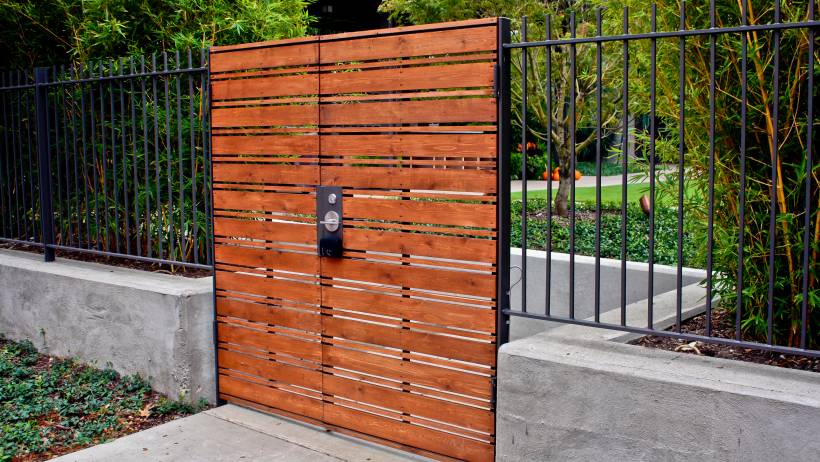 Metal fencing with a wooden gate (Source: iStock)
Metal fencing with a wooden gate (Source: iStock)
When budgeting for a new fence, there are extra costs to keep in mind that can add up quickly. Below are some common factors that may affect your overall fence installation cost:
Driveway gate
Adding a gate requires additional materials and more durable posts. A driveway gate can cost about $1,600 to $3,500, depending on its size and material.
Fence painting
To protect your fence panels from the elements like rain, UV rays, and temperature changes, painting or staining is important. This is especially the case if they’re made of wood. Expect to spend $240 to $600 on paint or stain and between $150 to $550 for labour if hiring a professional.
Temporary fencing
If the installation process takes a few days or weeks to complete, you may need to consider temporary fencing costs to your property’s security or privacy, especially if you have pets or children.
Waste removal
Don’t forget the cost of disposing of old materials. As mentioned above, some contractors include waste removal in their quotes, while others charge extra for it.
Permit costs
Depending on your location, planning approval may not always be necessary for fence construction in Australia.
In certain residential, rural, and business zones, fences can be built without approval if they meet specific requirements, such as using non-combustible materials in bushfire-prone areas. However, restrictions apply to heritage-listed properties, protected areas, and koala habitats.
Landscaping
Ground preparation and adjustments to surrounding landscaping can increase labour costs, too. Clearing vegetation or levelling the ground is often necessary to ensure a smooth installation. Prepare to shell out $500 to $800 for smaller yard maintenance or up to $20,000 if major redesigns will be needed.
What should you look for when hiring a professional fence installer?
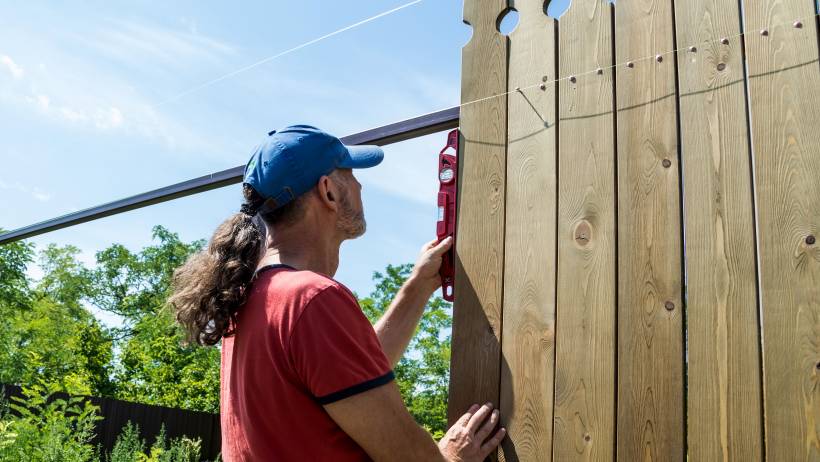 A handyman installing fence boards (Source: iStock)
A handyman installing fence boards (Source: iStock)
Thinking about fence replacement costs is not enough. There are also factors to consider when choosing the right fence installer for the job.
Check their qualifications and experience
Make sure that the installer is qualified and has experience with the type of fencing you need, whether it’s wood, composite, or metal. Look for membership in professional bodies such as the Master Builders Association (MBA) or the Housing Industry Association (HIA) to ensure that the contractor meets industry standards.
Get multiple quotes and compare services
Always compare quotes from contractors. Make sure that each one includes a breakdown of costs for materials, labour, and any additional services like waste disposal.
Look for clear communication and professionalism
Choose an installer who communicates clearly, answers your questions, and provides guidance on materials, design, and timelines.
Discuss site preparation and aftercare
Ask whether they handle site preparation, like clearing old fencing. Inquire about any post-installation support or maintenance services they offer as well.
How can you save money when installing a new fence?
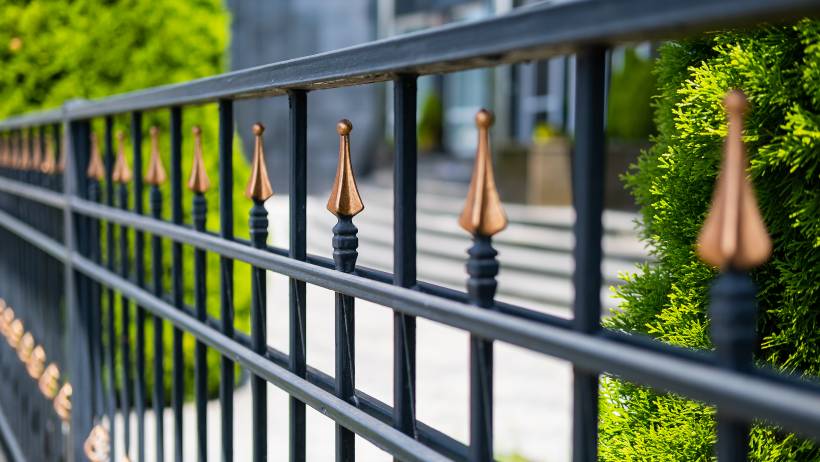 Ornate black metal fence with decorative copper finials (Source: Stock)
Ornate black metal fence with decorative copper finials (Source: Stock)
Installing a new fence doesn’t have to break the bank. Here are a few practical ways to reduce your costs while still achieving the look and functionality you want.
Reduce the height of the fence. Taller fences use more materials and take longer to install. Opting for a shorter fence, like 4 or 5 feet, can cut down on both material and labour costs.
Choose basic fence designs. Simpler designs, like lap panels or picket fencing, are more affordable than custom or decorative styles.
Reuse existing posts or materials. If your current fence posts or panels are still in good condition, reuse them.
Plan fence installation in the off-season. Schedule it in autumn or winter when demand is lower.
Minimise ground preparation costs. Clearing the ground and removing obstacles yourself can reduce the amount of labour needed.
Buy materials in bulk. If you’re installing a long fence or multiple sections, buying materials in bulk can lead to discounts. Look for deals when purchasing the panels and other supplies.
Invest in durable materials. While materials like pressure-treated wood or composite might be pricier upfront, their long-lasting durability will save you money on maintenance and replacements in the long run.
Skip the stain or paint. Forgoing painting or staining saves you both time and money upfront. However, you can always paint garden fence panels later if desired.
Leave your fencing project to the pros
Planning to install or replace a fence but unsure how to handle it all? From choosing the right materials to the actual fencing installation, the process can be overwhelming.
So, why not leave it to the professionals? With just a few clicks, you can post a task on Airtasker and find skilled workers specialising in installation, repair, and staining to ensure your project is done right.
Post a task today and get connected with expert Taskers who’ll help bring your fencing project to life while keeping it on budget.
Learn more about our contributors

Written by Angela A.
Staff Writer
Angela Apolonio is an experienced writer with a Biology background. She writes about home tips, car upkeep, gardening hacks, and food facts, bringing a unique blend of science and practicality to her work. As a wife and a mother, she knows the value of iron-clad routines, so she's passionate about sharing what works for her with everyone else. She loves making everyday life simpler and helping readers find fresh ideas to bring more joy into their spaces.
FAQs on fence installation
Timber paling fences in Melbourne usually cost between $150 and $170 per linear metre, including materials and installation.
Some titles don’t imply ownership, while others do. In some cases, fences would be a joint responsibility of both neighbours. If you’re unsure, check your land and registry documents. If yours aren’t clear, talk to your neighbours to check the boundary lines.
In Australia, neighbours typically share the cost of a boundary fence equally, as outlined in fencing legislation. If one neighbour wants a more expensive option, they may need to cover the additional costs. It’s best to check with your local council for confirmation or advice if you’re unsure.
Colorbond fencing costs range from $70 to $130 per metre, depending on factors like location, labour rates, and installation complexity.
Glass pool fencing in Sydney can cost between $220 and $1,100 per metre, with frameless options on the higher end of the scale due to their premium look.
Find fence installaters, fast
Post a task
Related price guides
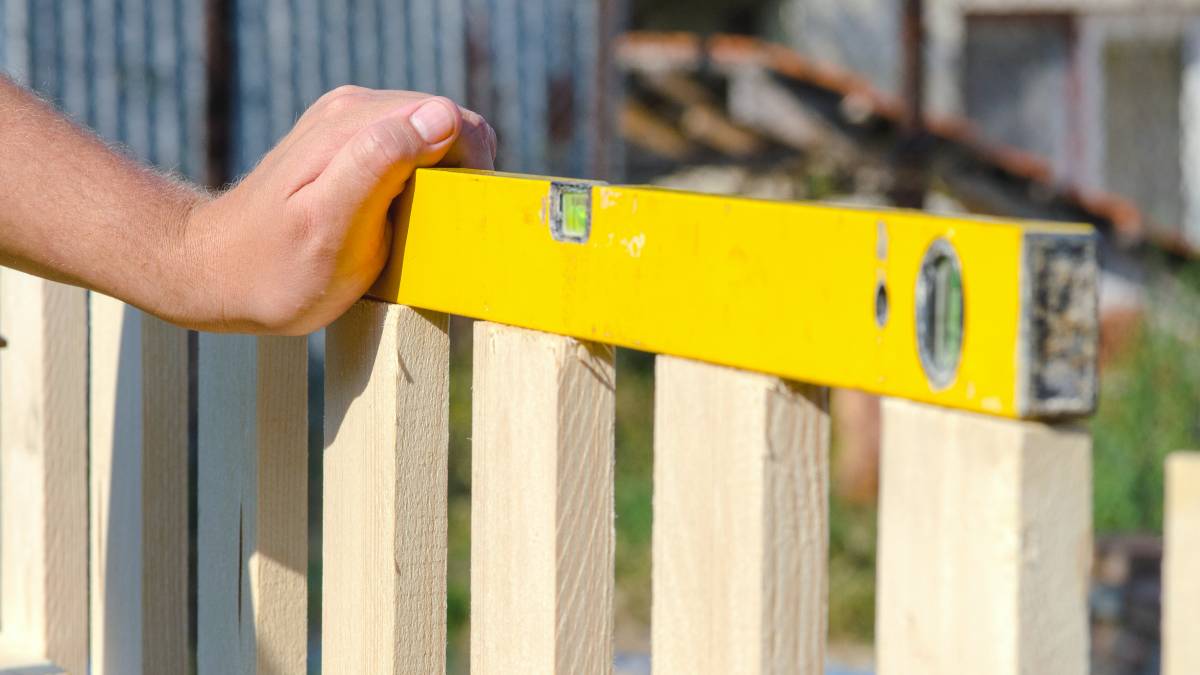
How much does wood fencing cost?
Read more
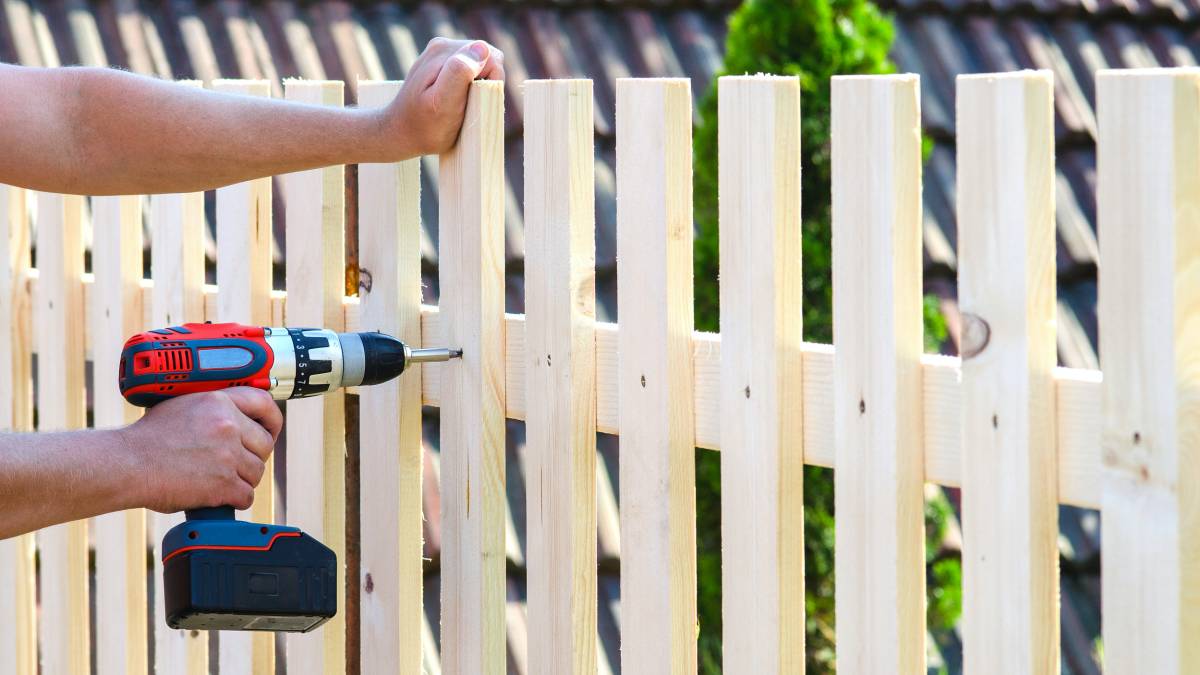
How much does fence repair cost?
Read more
Related articles
